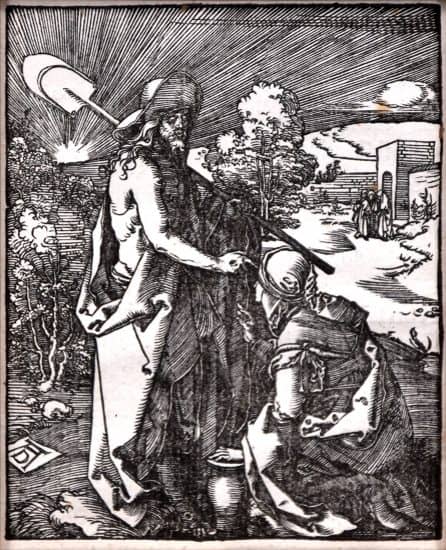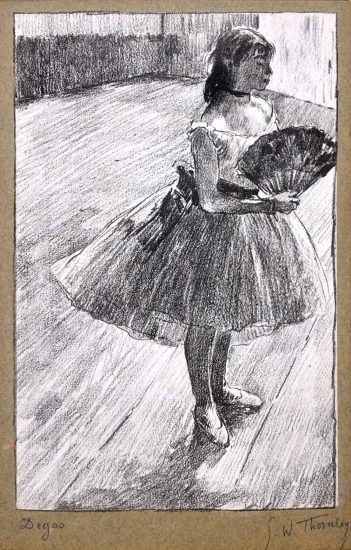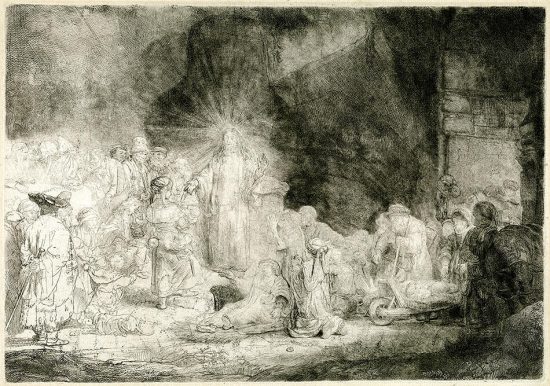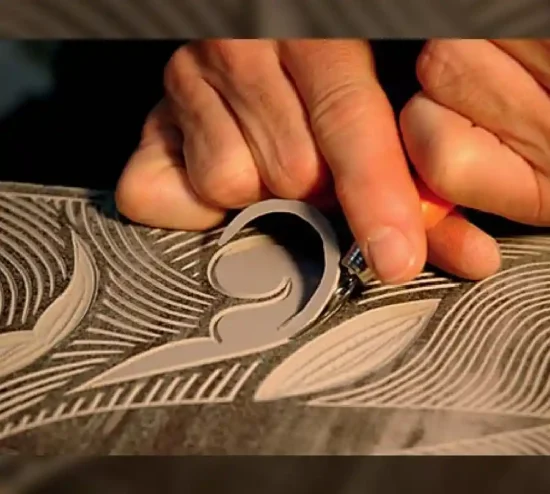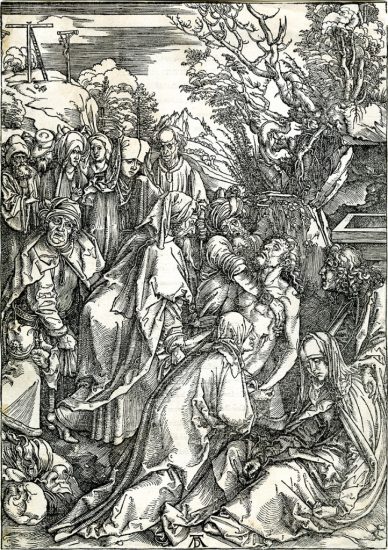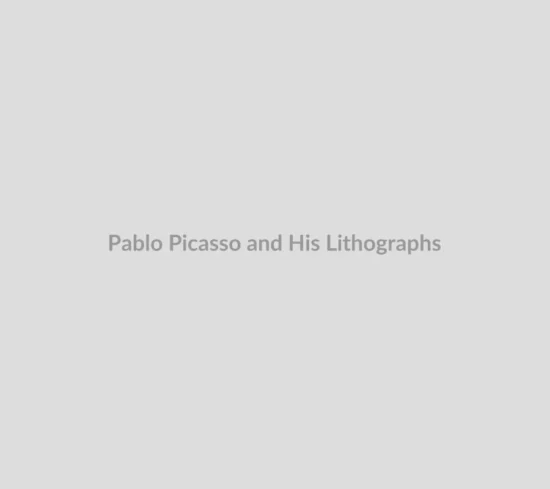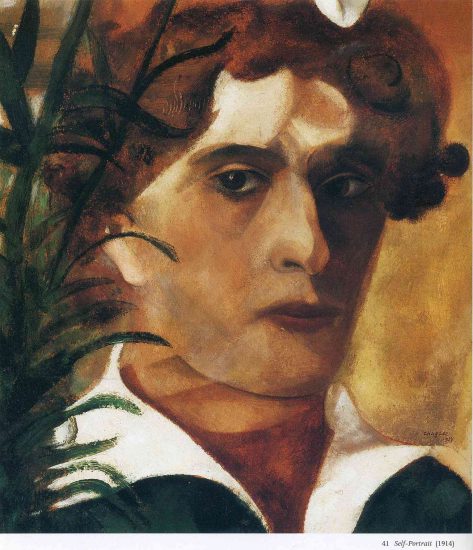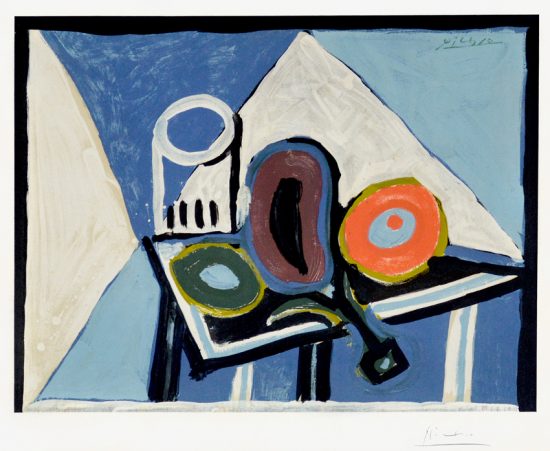Please see the Art Dictionary and Resources & Links for more information.
- Printmaking Techniques
- An Overview of Original Prints
- Lithography (Planographic Printing)
- Intaglio Printing
- Relief Printing
- Screenprinting
The Print
The image obtained from any printing element. Originally, this was either a metal plate, engraved in intaglio, or a wood block (or metal plate) cut in relief. From the beginning of the nineteenth century, lithographic stones were included, and today screen-printing ads are a further type of printing element. An impression taken planographically from a painted surface may also be termed a print (see: monotype).
Collotype
Initially called albertype, after its principal inventor, this process consists in pouring a layer of gelatine mixed with potassium chromate over the surface of a zinc or glass plate which is then exposed to light to receive the image. The gelatine hardens in proportion to the amount of light received, the unexposed parts remaining soft and capable of retaining moisture, and the printing can therefore be done, lithographically: the plate is dampened with water and the ink is applied with a roller. It adheres to the surface in inverse proportion to the amount of moisture retained, the hard areas of gelatine printing the darkest. The reticulated grain of collotype is particularly good for reproducing watercolor, for which the process was much used during the latter part of the nineteenth century. BACK TO TOP
Offset lithography or offset or photo-mechanical print
One of the four major industrial printing techniques of which the others are: letterpress, photogravure and screenprinting. It has become the most commonly used method in commercial printing, although its importance in printmaking is not very great. It is an extension of the lithographic technique: the image is picked up from the stone, or more usually plate (either zinc or aluminium which has either been grained or covered with an absorbent oxide), by a rubber roller which then reprints it onto paper. Text and image can be transferred photographically and prepared in the usual lithographic technique based on the natural antipathy between grease and water. The advantage of offset is that it enables the damping, inking and printing itself to be done by a series of rollers which enormously speeds the operation, thereby enhancing the commercial value of the technique. BACK TO TOP
Cliché-verre (glass print)
A glass plate is covered with ink or paint and a design is drawn through it with a stylus or brush, producing a negative matrix. A piece of photo-sensitized paper is placed beneath it and it is exposed to light. A positive, proto-photographic image appears on the paper. It should be noted that this is a print without printing; there is no ink on the paper. BACK TO TOP
Chine Collé
Areas of thin colored tissue / rice paper mounted (collage or Collé) on or glued to the surface of a print. Frequently combined with etching or lithography this process, the ink of the plate glues the thin paper to the substrate as the print is run through the press.BACK TO TOP
Intaglio Printing

A printing process in which the image is incised or etched into a metal plate using a variety of techniques and tools. Ink is applied to the recessed areas of the printing plate by wiping, dabbing, or a combination of both. The paper receives the ink from the incised marks and not from the top surface of the plate, although thin films of ink may be left on the surface to produce a variety of tonal effects. For intaglio printing, the paper is dampened so that under printing pressure it will be squeezed into all the inked recesses of the plate and around it (leaving a PLATE MARK if the plate is smaller than the paper).
One of the distinguishing characteristics of this type of printing is that the dried ink impression stands up from the paper in very slight relief, perceptible by touching with the fingers or by close inspection.
In all intaglio prints, except mezzotint, the design is produced from ink in lines or areas below the surface of the plate. The smooth surface is wiped of ink before printing. Considerable pressure is used in the press to force the ink out of the lines and areas and, to an extent, to force the paper into them, so the final printed image will appear to be slightly raised above the surface of the un-inked paper.
Artists who use intaglio include Rembrandt, Brueghel the Elder, Pablo Picasso, and Joan Miró.BACK TO TOP
Engraving
Lines are incised on a highly polished metal plate by means of a sharp-pointed instrument, diamond-shaped in cross section, called a burin or graver. The tool works like a plough cutting a furrow. The strength of the line may be increased by cutting deeper. The burin is held in a fixed position and, to produce a curved line, the plate itself is turned. This makes engraving a slow and painstaking technique producing controlled, formal results. BACK TO TOP
Drypoint
Lines are scratched into the metal plate using any sharp instrument with the same freedom as a pencil. The effect is spontaneous, not formal. Cutting into the plate throws up, on each side of the cut, ridges of displaced metal, which are called burr. In the printing of the plate, these ridges will also take some ink and print a kind of inky glow around the line. BACK TO TOP
Etching
Lines are bitten into the metal plate through the use of acid. To begin with, the plate is covered with a thin, acid-impervious coating called a ground which is smoked to a uniform black. Lines are drawn through the ground with a stylus baring the metal of the plate. Acid is then applied which eats into the exposed areas. The longer the plate is exposed to the acid, the deeper the bite and therefore the stronger the line. Different depths are achieved by covering some lines with acid-impervious varnish (stop-out) and biting others a second (or third) time. The appearance of etchings is usually free and spontaneous but the technique has occasionally been used to produce results almost as formal as engraving. BACK TO TOP
Soft-ground etching
One of the etching processes which aims to simulate the effects of a chalk or crayon drawing (see: crayon manner). The plate is initially covered with a soft ground. The drawing is made with a hard crayon on paper which has been pressed to the surface of the grounded plate; the ground adheres to the back of the paper where the crayon has left indentations in it, thereby creating an impression on the plate of the crayon marks. The paper with the attached ground is carefully removed and the plate is bitten. It is possible to reproduce any kind of texture with this method: textiles, rough papers, netting or leather can be pressed into a soft ground in a similar fashion. BACK TO TOP
Aquatint
A technique of acid-biting areas of tone rather than lines. A ground is used that is not completely impervious to acid, and a pebbly or granular texture (broad or fine) is produced on the metal plate. Stop-out, second and third bites are. used to produce variations of darkness. BACK TO TOP
Carborundum
A very hard mixture consisting primarily of silicon carbide; it is used as an abrasive and, in powdered form, in a method of engraving invented by Henri Goetz. He used it to obtain a dotted effect by sprinkling it over a metal plate (usually duralumin) which was then pulled through a press, thereby causing the grains to penetrate the metal. BACK TO TOP
Mezzotint
The only intaglio technique that proceeds from dark to light rather than the opposite. The metal plate is totally abraded with an instrument called a rocker. Were it inked and printed at this point, it would produce an even, rich black. The design, in areas of tone rather than lines, is produced entirely by smoothing areas of the plate with a scraper or a burnishing tool. The more scraping and burnishing done, the lighter the area. BACK TO TOP
Photogravure
Sometimes known as heliogravure (particularly hand photogravure), this technique is one of the most important methods of industrial printing (the others being letterpress and offset lithography). It is an intaglio process which can be divided into two procedures: (1) Hand photogravure, a derivation of the aquatint in its method of obtaining tone. After sensitizing a copper plate and exposing it to light to form the image, resin or bitumen grain was scattered over it. The procedure continued as for a normal aquatint plate. This technique subsequently developed into a totally photomechanical process: (2) Machine photogravure, in which the tone is supplied by a cross-line screen. It was discovered that the plate could be bent into the form of a cylinder, a development which allowed very fast printing speeds (rotogravure). The technique is used more for magazines and catalogues than for print-making itself. BACK TO TOP
Relief Printing
A printing process in which the impression is created by the uncarved areas or the unprepared surface of the PRINTING ELEMENT, which has been inked with a ROLLER, BRAYER, or other tool. The cut, or incised, areas do not usually print, since they are recessed and are rarely inked. Nonetheless, during a run paper is often pushed into these sunken areas, creating an embossed effect. The recessed areas do print when the printing element is inked in the same manner as an etching plate, with the surface wiped dean, leaving ink in the recesses. WOODCUT and LINOCUT are usually used for relief printing.
In all relief techniques it is the surface of the block that is inked and printed and, given perfect printing, all lines or surfaces will be equally dark. Moderate pressure in the press will emboss the paper to an extent, so the inked design will lie slightly below the uninked surface of the paper.
Artists who use intaglio include Albrecht Dürer, Wassily Kandinsky, and Pablo Picasso.BACK TO TOP
Woodcut
The design is drawn on a wood plank (side grain) and those areas that are not to print are cut away well below the surface with a knife or gouge. Linocut is the same technique using linoleum rather than wood. BACK TO TOP
Chiaroscuro Woodcut
The design is divided among several blocks, each to print a different color, with or without overlaps. Those areas cut away in all blocks will not print at all and thus provide highlights of the natural color of the paper used, the light of the “light-dark” technique. The blocks must be carefully matched in placement of the design (registration) and the paper must pass through as many printings as there are blocks. BACK TO TOP
Wood Engraving
Tools similar to metal engraving are used on polished blocks of end-grain wood (usually boxwood), but instead of producing lines that will print, they are used to produce non-printing lines. It is the uncut surface that will take the ink and print.BACK TO TOP
Linocut or linoleum cut
An abbreviation of linoleum cut. The technique is a derivation of the woodcut but owing to the supple, relatively soft properties of the material, linocuts have different characteristics. The material takes all types of lines, but is most suited to large designs with contrasting dark and light flat tints. The material is cut with small pen-like tools which have a mushroom-shaped handle. The tools have a variety of forms: straight and rounded edge, double-pointed, as a chisel or a V-shaped chisel, etc. As on a woodcut, the relief parts of the block are inked. For printing a large number of important proofs, the linoleum is attached to a wooden block. Color printing is done with several linoleum blocks. Long disparaged by serious artists as not challenging enough, the linocut came into its own after artists like Picasso and Matisse began to work in that technique.BACK TO TOP
Monotype
A design is drawn in ink or paint on any smooth surface. While the ink or paint is still wet, a piece of paper is laid on top of it and pressure applied, either with a press or by hand. The process, by its name, is meant to produce a single impression, but there is sometimes enough damp ink left on the plate surface to make a second, weaker, impression. BACK TO TOP
Screenprinting
The principle of screenprinting, or silkscreening, consists in applying stencils to a screen (constructed of silk or of some synthetic or metallic material), in such a way that when ink is applied it is prevented from passing through some parts while penetrating the rest of the screen, thereby printing an image on paper placed underneath. The screen is stretched across a frame and attached to a base in such a manner that it can readily move up and down, so that paper can be easily placed and removed as required. For each impression, the paper is placed against registration tabs to ensure that the printing is done in the correct position. The ink is poured over the masking at one end of the screen and when this has been lowered into position, the ink is scraped across the screen with the aid of a squeegee.
The most important part of the process is the preparation of the screen. Stencils may be applied in a variety of ways, including the use of filling-in liquid, varnish or plastic film. A drawing can be made directly on the surface with a special ink which is removed in readiness for printing after the rest of the screen has been blocked out. A photographic stencil is made by initially sensitizing the screen.
Andy Warhol screen prints are very collectible.BACK TO TOP
Stencil (Pochoir)
Stencils are an essential part of screenprinting: they are attached to or incorporated with the screen to ensure that the ink passes through in the correct places. They can be made in many different forms, e. g. as a simple masking or covering stencil; as a “wash-out” stencil, which involves drawing the design on the screen in a greasy substance, then covering the whole screen with filler or gum, and finally dissolving the greasy image in turns, thereby forming a 1. positive stencil; or as a photo-stencil, whereby photographic images are incorporated into the screen. 2. Stencils are also used for coloring prints by hand. Stencils of the areas to be colored are cut out in zinc or aluminum; the colors are dabbed on with a large brush (known as a pompon in French); they may be juxtaposed or superimposed over each other. The method was much used in the coloring of maps, topographical prints and devotional woodcuts. It is still used today for book illustration and on greeting cards.

